The United States will elect its 47th president next month, and for the first time during the election, virtual currency has become a hot topic. The market has developed significantly since the 2020 election. This year's election marks the first time that cryptocurrencies have reached a critical mass level of influence. Bitcoin has become a hot topic and policy issue for some people, and the market is influenced by candidates from time to time.
Four years ago, cryptocurrencies were much smaller and less widely accepted. At the time, Larry Fink considered Bitcoin to be a “money laundering indicator.” It wasn't until late 2020 and early 2021 that BlackRock's CEO began to publicly change his views. Fink now regularly discusses the benefits of Bitcoin and the potential of digital assets like Ether.
Trading volumes and access to digital asset investments have also improved over the past four years, despite a hostile regulatory environment and several public bankruptcies and court cases in the United States. The increase in activity is evident in both the increase in dollar-denominated trading volume and the increase in the number of transactions since 2020.
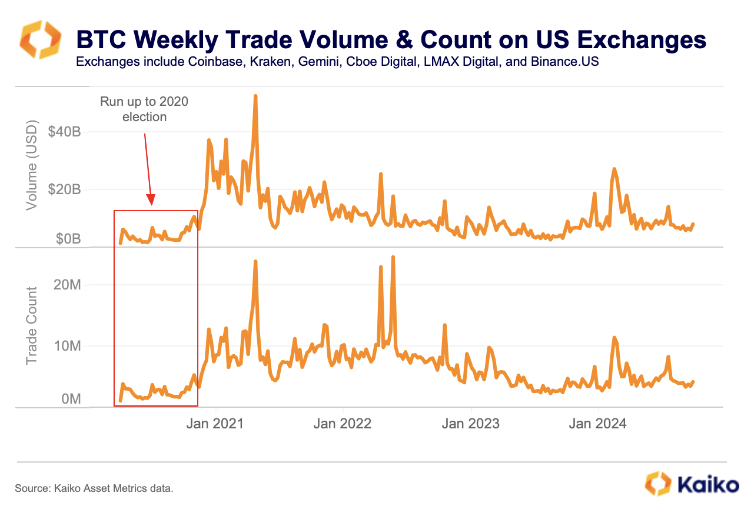
bet on elections
Polymarket, an on-chain prediction market built on Polygon, gained mainstream attention during this election as bettors flocked to bet on who the next US president would be. But how efficient is the polymarket, and is Donald Trump really that far ahead?
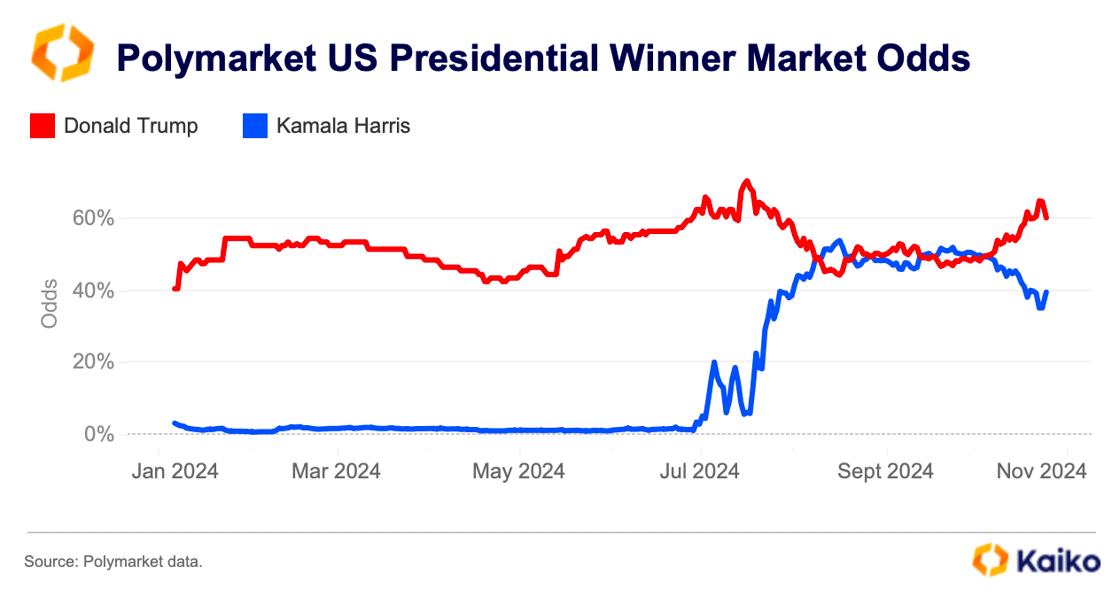
First, polymarkets are not available in the US, so current odds do not reflect the thoughts and intentions of US voters. For example, Polymarket said it identified one of the whales supporting Donald Trump as being French.
Furthermore, market odds should not be equated with opinion polls. Both have different incentives. While polls aim to measure results within a margin of error, Polymarket users' goal is to pick a winner, whether it's a one-vote difference or a landslide. plug.
Since launching the U.S. Presidential Winner Market in January, trading volume has exceeded $2 billion. At the same time, Dune's on-chain analysis shows that open interest on the platform has never exceeded $250 million.
These indicators suggest that the market is very illiquid and has little value in predicting election outcomes.
With that in mind, we looked at US polling numbers for further insight. Across national polls, far fewer people have been convicted. Many pollsters, including Polymarket advisor Nate Silver, view this race as a close one.
FiveThirtyEight's average national poll shows Vice President Kamala Harris leading by less than two points, with her approval rating at 48.2% compared to Donald Trump's 46.4%. Most other reputable polls, including those from The New York Times and The Economist, have Harris leading by 1 to 2 percentage points.

As the poll is nearing its end and the on-chain prediction market is still in its infancy, it is important to consider other markets.
Positioning in the cryptocurrency derivatives market
The area of cryptocurrency derivatives is much larger and offers a wider range of investable products. Therefore, activity in these markets provides hints as to who is leading the race. Notably, Deribit options trading volume has increased prior to the election.
Much of the trading activity on Deribit is concentrated in late October and early November as traders prepare for the election. The Dec. 27 expiration date is still active, with a large number of $100,000 strikes. This could suggest that traders are anticipating a potential post-election rally regardless of who wins the race.
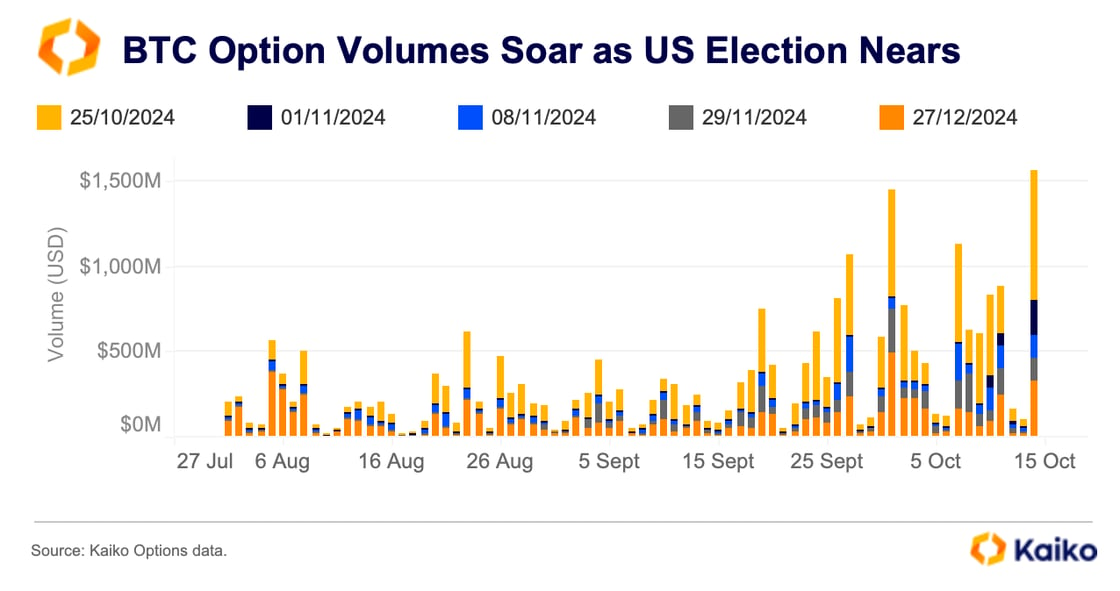
Analyzing Deribit block trades provides insight into institutional investor activity. These trades are typically made by large institutional traders who execute large orders without significantly impacting the market. These transactions are negotiated privately.
Below are block trades on Deribit from Monday to Tuesday. The blue line represents the current market price of BTC, while the green and red blocks indicate the amount of contracts bought and sold, respectively. The darker the color, the greater the buying and selling volume.
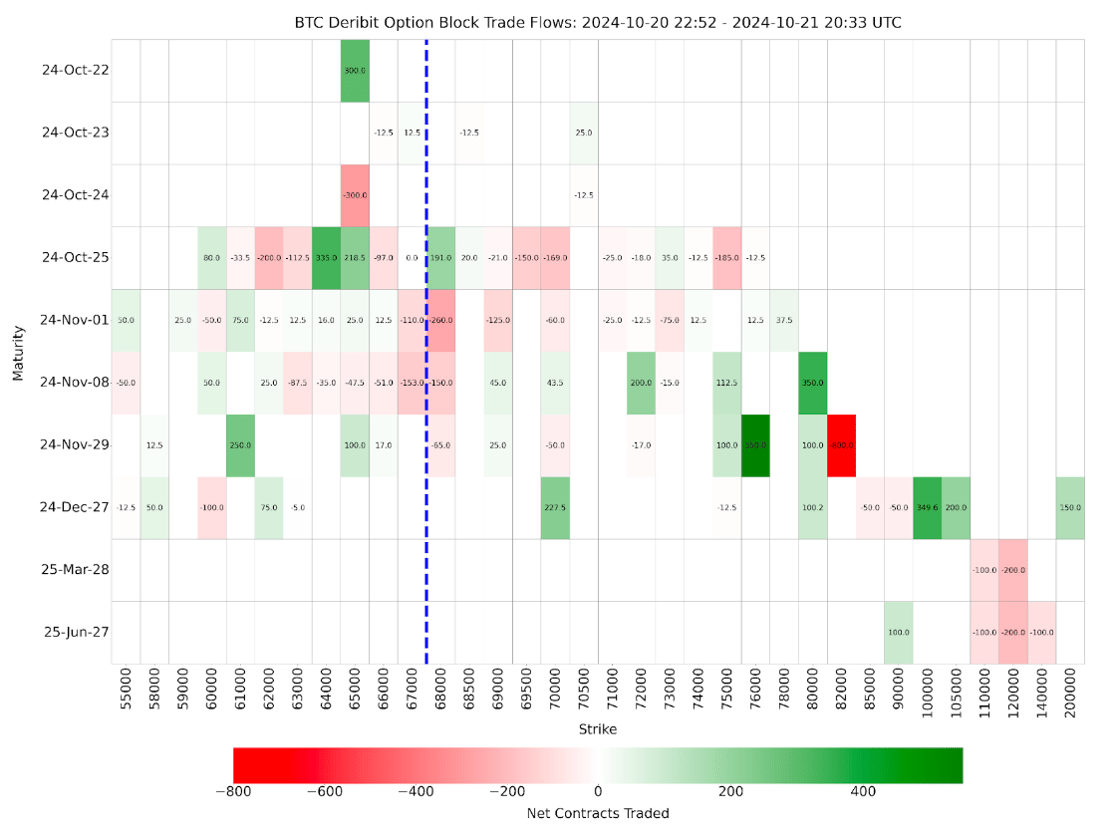
Trading is concentrated around the October and November expirations, with the October 25th contract being the most traded. The November 29 contract in particular has seen some bullish volume over the past 24 hours, with 550 contracts bought at a strike price of $76,000.
Deribit's November 8 US election special contract has been heavily traded since its launch in August. The deadline was added ahead of companies' normal listing schedule to expand options for investors trading around the election.
Since August, there has been $3 billion in trading volume on this expiration date alone, with most bets turning bullish. Most of the trades were concentrated in the $65,000 to $80,000 range, suggesting traders see prices trading near their post-election all-time highs.
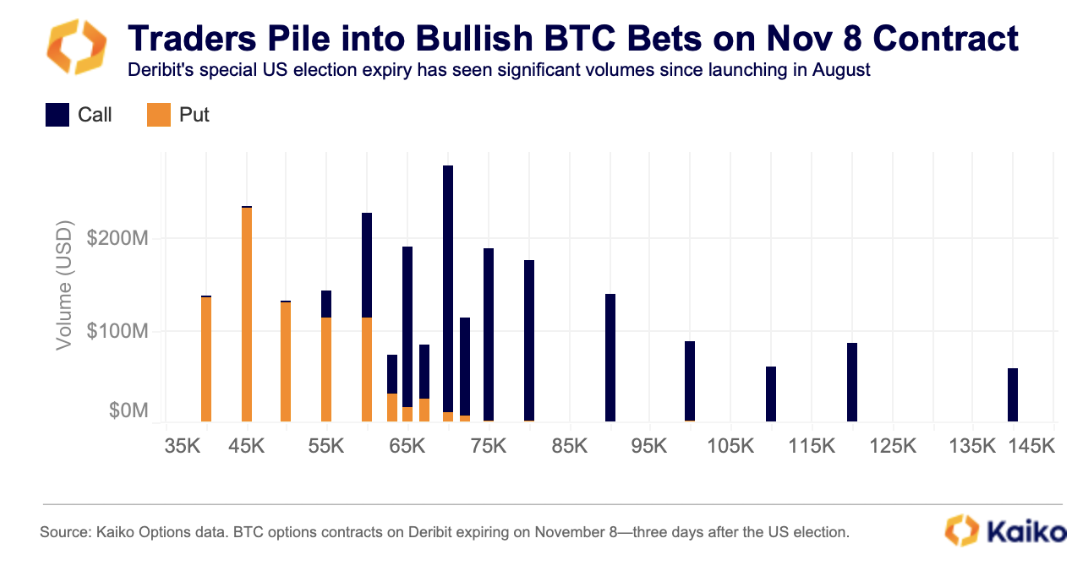
The contract has significant volume and expires just three days after the US election and one day after the next Fed meeting, both events likely to cause a spike in volatility. Increased volatility opens up possibilities for traders who are willing to accept increased risk.
One popular option strategy for this November 8th expiration is the long strangle. You need to buy both calls and puts. In the example below, a trader purchased a $63,000 put and a $67,000 call.
The goal of this strategy is to capture large price movements. Therefore, trading works best when the likelihood of volatility increases.
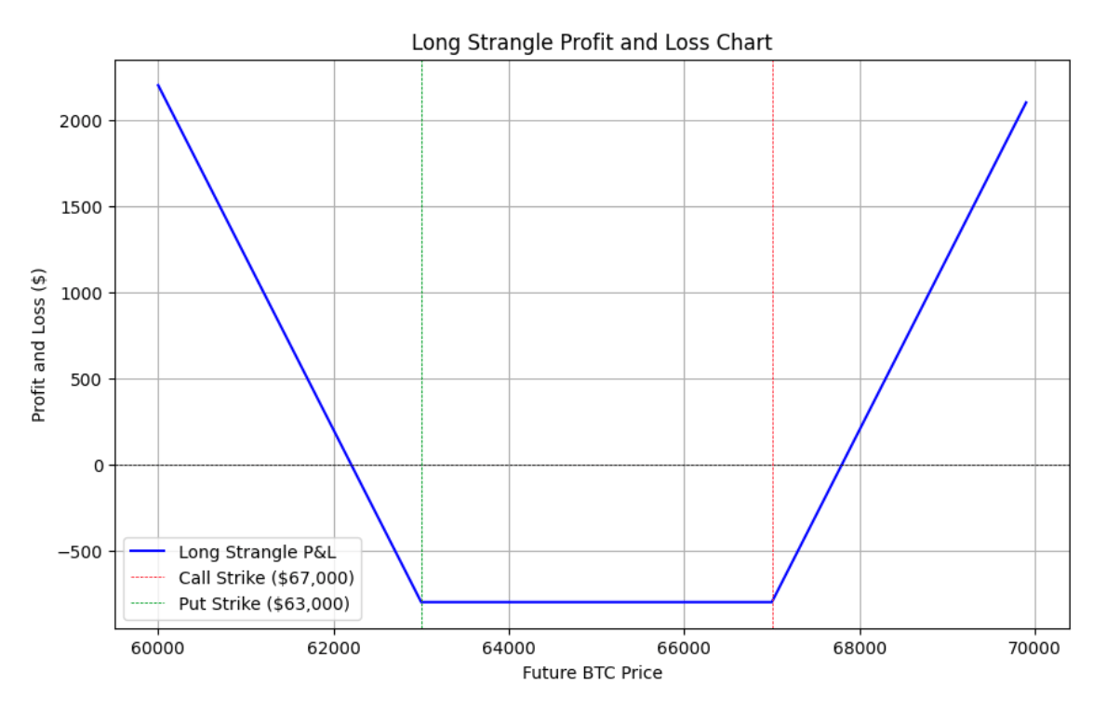
What are traditional financial markets saying?
More established crypto markets, such as broader financial markets and derivatives, may provide more insight into how markets perceive election results than prediction markets or opinion polls.
The Bitcoin ETF space, where cryptocurrencies and traditional finance intersect, has seen a surge in investor inflows. Investors have been gravitating towards BTC futures on the Chicago Mercantile Exchange (CME), with open interest on the exchange hitting record highs for the past few weeks.
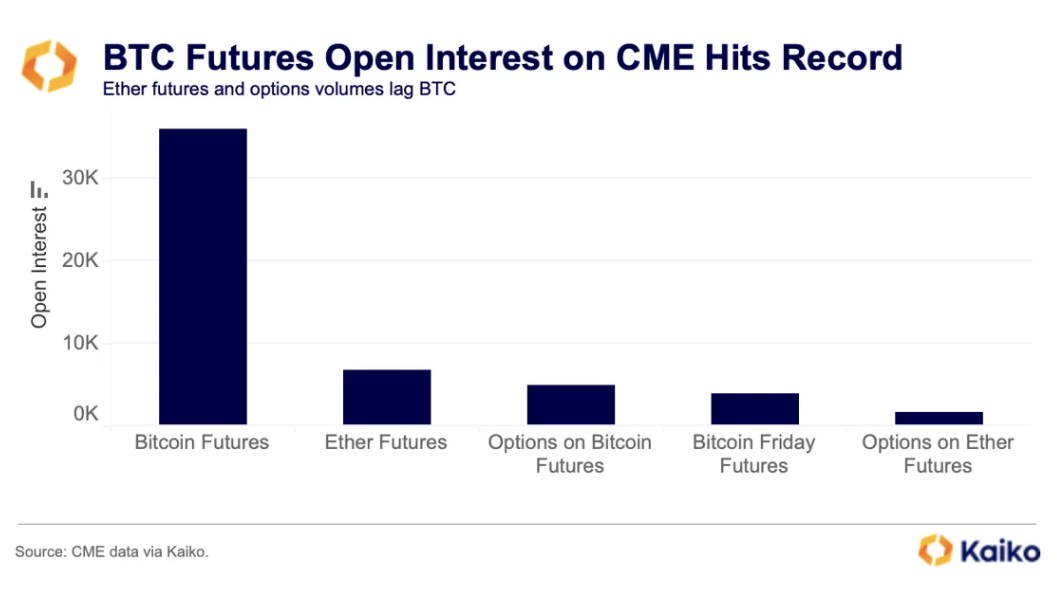
Crypto markets aren’t the only ones providing insight into election outcomes. Larger, more established markets, such as U.S. Treasuries, will provide further indication of positioning ahead of the vote.
Donald Trump wants to “make tariffs beautiful again.” Republican candidates have repeatedly promised to raise tariffs if elected, a policy that could have an impact on inflation if implemented. So another sign of President Trump's potential success next month is evident in the US 10-year Treasury yield.
Since the end of September, yields have been trending upward as the chances of Republican candidates winning the election have increased. Essentially, Trump's victory was seen as inflationary, which likely contributed to the rise in yields.
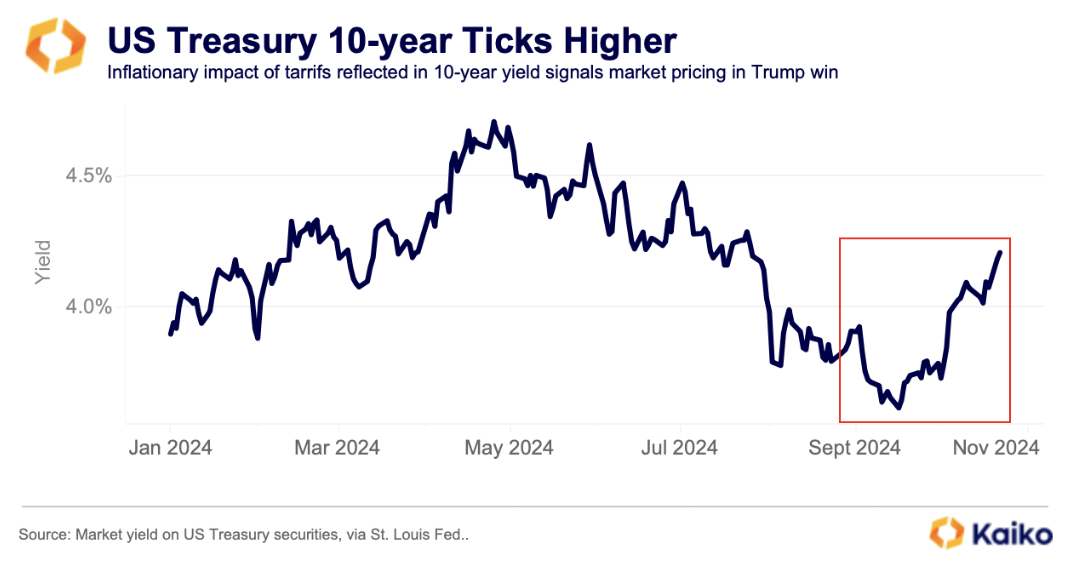
Or you could argue that whichever candidate wins will have an impact on inflation. As Paul Tudor Jones argued on Tuesday, “all roads lead to inflation.”
However, the performance of Trump Media and Technology Group (DWAC) supports the theory that the market is pricing in a Republican victory. The stock has been extremely volatile this year, with trading halted multiple times throughout the year as prices fell by double digits during the day. The stock is up nearly 80% since January, but has experienced several double-digit drawdowns in that time.
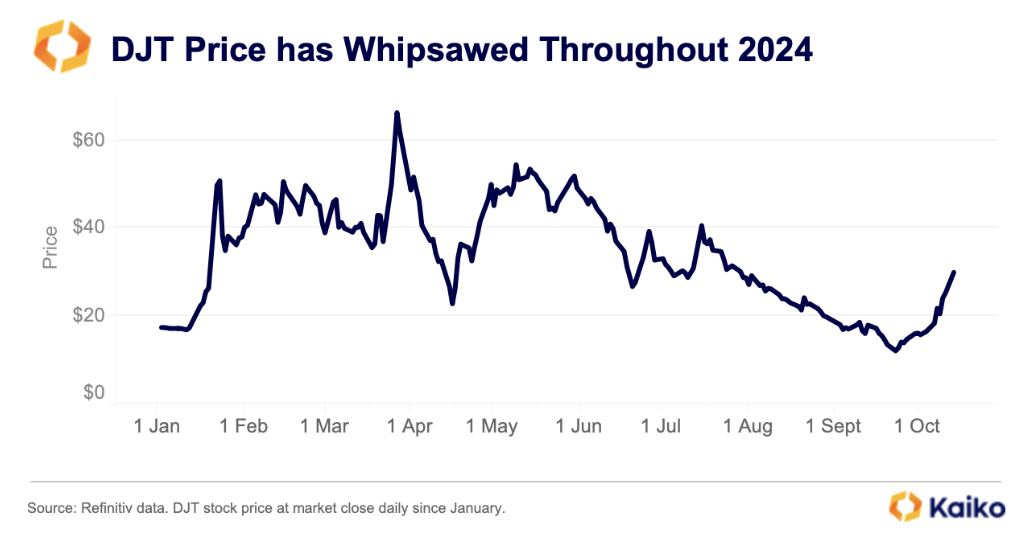
Options on the company's stock offer new insight into pre-election positioning. The current volatility skew for DJT options expiring on Friday, November 8th indicates that the implied volatility (IV) of the put is much higher, allowing traders to hedge against a decline in the underlying stock price. It suggests that.
Very high implied volatility and sparse trading volume make these option contracts less attractive to many traders.
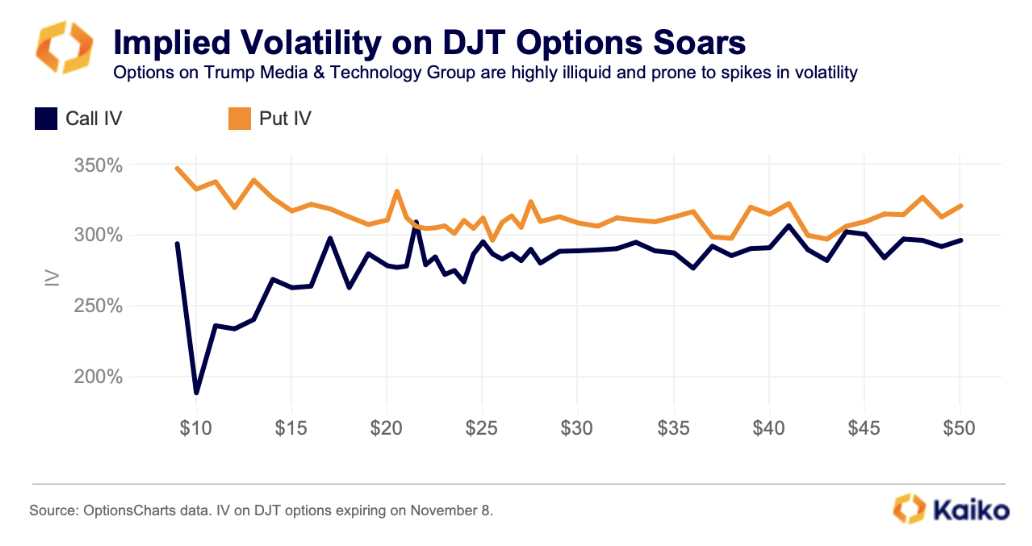
conclusion
Polymarkets may have entered the public conversation during this election, but they are still in their infancy and their predictive power is still up for debate.
Therefore, we continue to focus on positioning and activity in the cryptocurrency market, namely in the field of derivatives and options, and provide greater insight into where smart money is heading towards November 5th. .
Venues such as Deribit have a proven track record during market events and have significantly higher liquidity profiles. Furthermore, as shown through heatmap analysis of options trades, bullish positions on Deribit, especially for expirations near elections, are not driven solely by retail investors, but rather by institutions. You can see that it is.
What is clear when analyzing these markets is that while traders are hoping for post-election upward momentum, short-term volatility is to be expected. In such a close race, such a positioning suggests that either candidate will be a net benefit for crypto in the long run.
Next week, we'll break down which indicators you should monitor in real-time to gauge potential price movements during and after the election, no matter the outcome.

